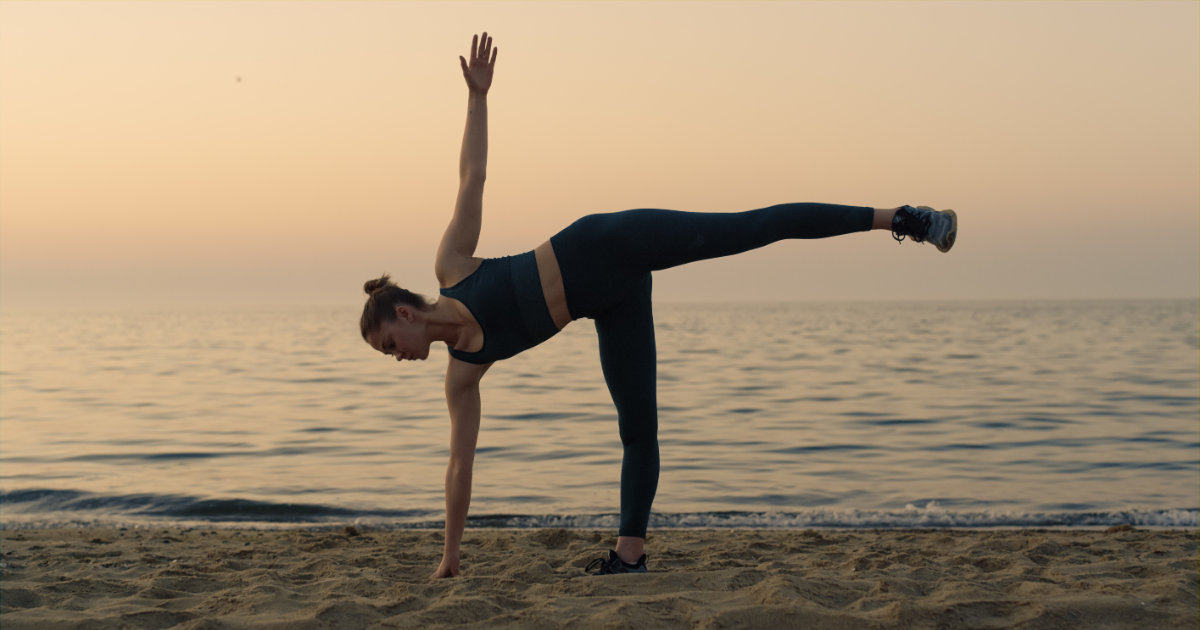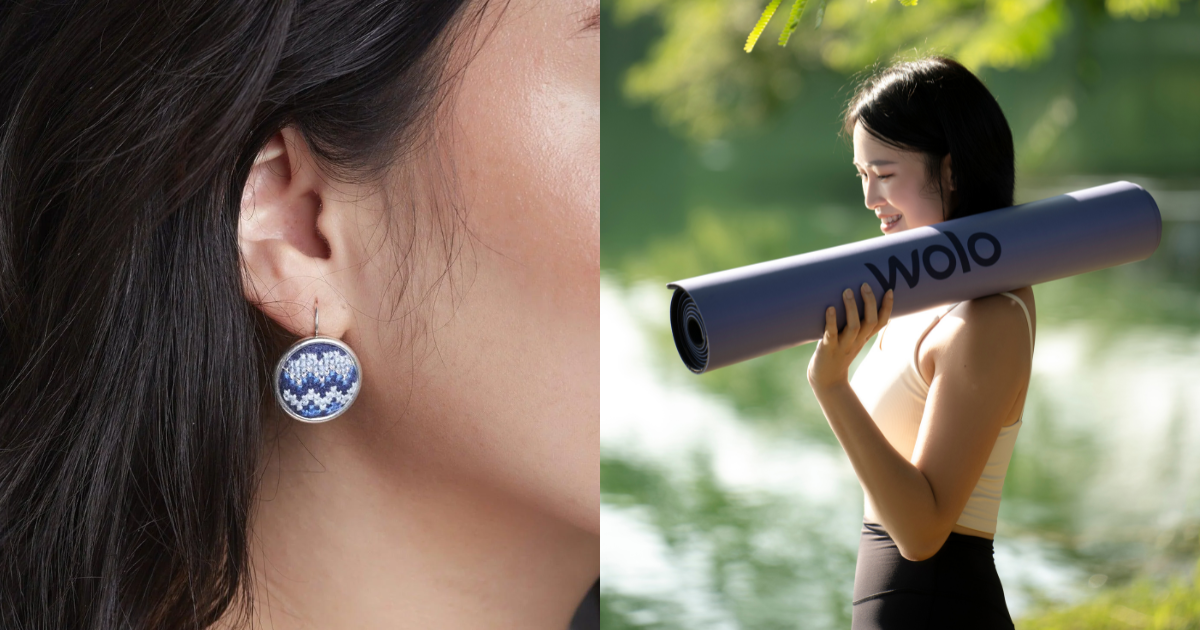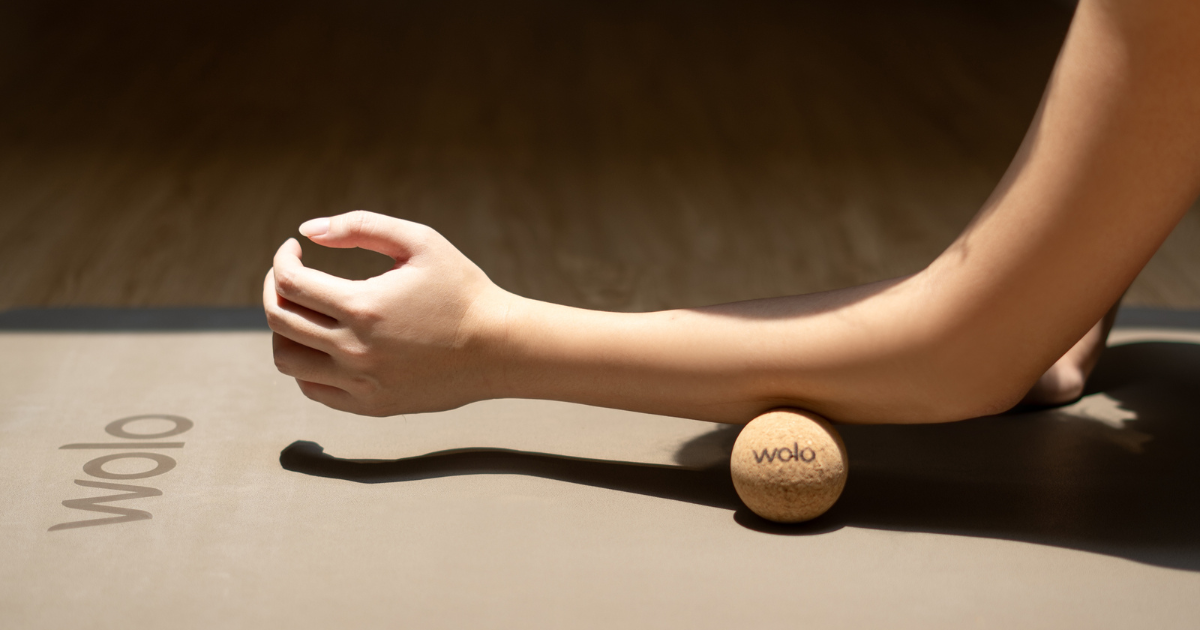Half Moon Pose (Ardha Chandrasana) is one of those yoga poses that looks graceful but can feel anything but—especially if you’re wobbling all over the place!
I remember my first attempt; I could barely stay up for a second before toppling over. If you’ve struggled with balance, alignment, or just feeling stable in this pose, you’re not alone. The good news? With the right approach, you can master it.
In this guide, I’ll walk you through everything you need—step-by-step instructions, common mistakes, and game-changing tips—so you can feel strong, steady, and confident in your Half Moon Pose. Let’s dive in!
Benefits of Half Moon Pose

Half Moon Pose isn’t just about balance—it’s a powerhouse pose that strengthens, stretches, and steadies both your body and mind.
- Builds strength and stability. Half Moon Pose is a full-body workout disguised as a balancing pose. Your standing leg works hard to keep you grounded, engaging the glutes, hamstrings, and ankles. Meanwhile, your core fires up to stabilize your body, and your lifted leg strengthens the hip flexors and outer thighs. Over time, this pose helps you develop better balance, coordination, and overall stability.
- Increases flexibility and mobility. This pose is a deep hip and chest opener. As you lift your top leg and rotate your torso, you create space in your hips, groin, and shoulders. It also stretches your hamstrings and lower back, improving mobility and making other yoga poses feel more accessible.
- Enhances focus and mindfulness. Balancing on one leg forces you to stay present. If your mind wanders, you’ll feel it instantly! Practicing Half Moon Pose strengthens your focus, concentration, and breath awareness—skills that carry over into daily life, helping you stay calm and centered.
- Boosts confidence and inner strength. There’s something empowering about holding Half Moon Pose without wobbling. The more you practice, the more confident you become—not just in your yoga practice but in yourself. This pose teaches patience, resilience, and the power of steady progress.
By consistently practicing Half Moon Pose, you’re not just improving your physical body—you’re also sharpening your mind and deepening your connection to yourself.
What to Prepare for Half Moon Pose
Before attempting Half Moon Pose, warm up your body to prevent strain and improve flexibility. Focus on hip openers, hamstring stretches, and core activation. Poses like Triangle Pose, Warrior II, and Extended Side Angle help prepare your legs and spine, while standing balance drills build stability.

Props can also make a huge difference. Use a yoga block under your bottom hand for extra support and to improve alignment. Practice near a wall if you struggle with balance—it provides a safety net while you build confidence. A strong foundation leads to a more controlled and steady pose!
How to Do Half Moon Pose: Step-by-Step Instructions
- Begin in Triangle Pose (Trikonasana) with your right foot forward and your left foot turned slightly inward. Extend your right arm down toward your shin or a block.
- Bend your right knee slightly and shift your weight onto your right foot.
- Place your right hand about 12 inches in front of your right foot, either on the floor or a block, for support.
- Engage your core and start lifting your left leg off the yoga mat, keeping it straight and active.
- Stack your left hip over your right hip and rotate your torso open to the left.
- Extend your left arm straight up toward the ceiling, aligning it with your right shoulder.
- Keep your gaze neutral or turn your head to look up at your raised hand for an extra challenge.
- Press firmly into your standing foot and engage your glutes to maintain balance.
- Hold for 5–10 breaths, breathing deeply and staying steady.
- To exit, slowly lower your left foot back to the mat and return to Triangle Pose before switching sides.
Common Mistakes and How to Fix Them
One of the biggest struggles in Half Moon Pose is wobbling or losing balance. If you keep tipping over, chances are you’re not fully engaging your core or distributing your weight properly. The key is to ground through your standing foot—pressing firmly into all four corners—while keeping your core strong and active. If balance is a major issue, try practicing near a wall for extra support until you feel more stable.
Another common mistake is letting your top hip collapse forward, which makes the pose feel unstable and misaligned. Instead, think about stacking your hips and shoulders as if you’re pressing your back against an invisible wall. This small shift can make a huge difference. Using a yoga block under your bottom hand can also help you find better alignment without straining.
Many people also lock out their standing knee, which can create unnecessary strain and make it harder to balance. Instead, keep a slight bend in your knee to activate your leg muscles and protect your joints. At the same time, avoid looking up too soon—turning your gaze upward before you’re steady can throw you off balance. Start by looking down or straight ahead, then shift your gaze upward once you feel stable.
Finally, don’t forget to breathe! Holding your breath creates tension and makes balance even harder. Instead, focus on slow, steady breaths to help you stay relaxed and in control. The more mindful your breath, the more effortless the pose will feel.
Half Moon Pose Modifications and Variations
If Half Moon Pose feels unstable or too intense, don’t worry—there are plenty of ways to modify it to match your comfort level. Whether you need extra support, want to ease into the stretch, or are looking for a challenge, these variations will help you build confidence and strength.
1. Half Moon Pose with a Block

If reaching the floor feels too far, place a yoga block under your bottom hand to bring the ground closer to you. This helps with stability and prevents overreaching. Use the block at any height that feels comfortable, and over time, you can work toward placing your hand lower.
Best for: Beginners and those struggling with balance
2. Half Moon Pose Against a Wall

Practicing with your back or top foot lightly touching a wall provides extra support while you build strength and confidence. This is a great way to improve alignment without worrying about falling. Start close to the wall and gradually move further away as your balance improves.
Best for: Beginners or those recovering from injury
3. Bent Standing Knee
Keeping a small bend in your standing knee helps prevent strain if you have limited hamstring flexibility. This slight adjustment allows you to maintain better posture and control in the pose without forcing your leg straight.
Best for: Those with tight hamstrings or knee sensitivity
4. Floating Half Moon
Instead of placing your bottom hand on the ground, hover it off the mat and engage your core for extra stability. This forces your legs and core to work harder, improving balance and strength. Attempt this only once you feel steady in the standard pose.
Best for: Advanced practitioners looking for a challenge
5. Half Moon to Sugarcane Pose (Ardha Chandra Chapasana)

Once stable in Half Moon, bend your top knee and grab your ankle with your top hand, creating a slight backbend. This variation opens the hips and chest while improving flexibility. Avoid this if you have back pain or struggle with balance, or place a yoga block under your bottom hand.
Best for: Yogis wanting a deeper hip stretch and backbend
6. Supported Half Moon with a Chair

Placing your bottom hand on a chair instead of the floor reduces the intensity while still working on balance and alignment. This is a great modification for anyone who needs extra support but still wants to practice the pose safely.
Best for: People with limited mobility or recovering from injury
Risks and Precautions
Half Moon Pose is a challenging balance pose, and without proper form, it can put strain on your joints and muscles. If you have ankle, knee, or hip injuries, approach this pose with caution. The standing leg takes a lot of weight, so if you feel discomfort, try using a block under your hand or practicing against a wall for extra support. It’s always better to modify than to force your body into an unstable position.
If you have low back pain or tight hamstrings, be mindful of overreaching. Trying to force your hand to the floor can cause unnecessary strain. Instead, keep a micro-bend in your standing knee and use a block to bring the floor closer to you. This helps maintain a strong, lengthened spine.
Dizziness is another risk, especially if you move too quickly or look up before finding your balance. Start by keeping your gaze down or forward, and only shift it upward once you feel steady. Always listen to your body—if something feels off, adjust or come out of the pose slowly.
Half Moon Pose FAQs
What is Half Moon Pose good for?
Half Moon Pose improves balance, strength, and flexibility by engaging the core, legs, and glutes while opening the hips and chest. It also enhances focus and coordination, making it a great pose for both physical and mental stability.
Is Half Moon Pose advanced?
Half Moon Pose is considered an intermediate-level pose because it requires balance, strength, and flexibility. However, with modifications—such as using a block or wall for support—beginners can safely build up to it.
What is the spiritual meaning of Half Moon Pose?
In yoga, the moon symbolizes calmness, intuition, and balance. Half Moon Pose represents expansion and grounding at the same time, helping you find strength while staying centered. It encourages inner stability and openness in both body and mind.
Why do I keep losing balance in Half Moon Pose?
Losing balance is usually caused by lack of core engagement, weak ankle stability, or improper weight distribution. To fix this, focus on pressing firmly into your standing foot, keeping your core activated, and using a block or wall until you feel steady.
Can I do Half Moon Pose if I have tight hamstrings?
Yes! If your hamstrings feel tight, keep a slight bend in your standing knee and use a block under your hand for support. This will help maintain good alignment while preventing strain on your lower back and legs.
The Bottom Line
Half Moon Pose may feel challenging at first, but with the right approach, you can build balance, strength, and confidence in the pose. The key is to engage your core, stack your hips, and find stability before adding any challenges.
If you wobble, don’t stress—it’s all part of the journey! Use props, take your time, and focus on steady breathwork. The more you practice, the more effortless it will feel. Keep exploring variations and modifications that work for your body, and most importantly, enjoy the process. With patience and consistency, you’ll master Half Moon Pose in no time!





